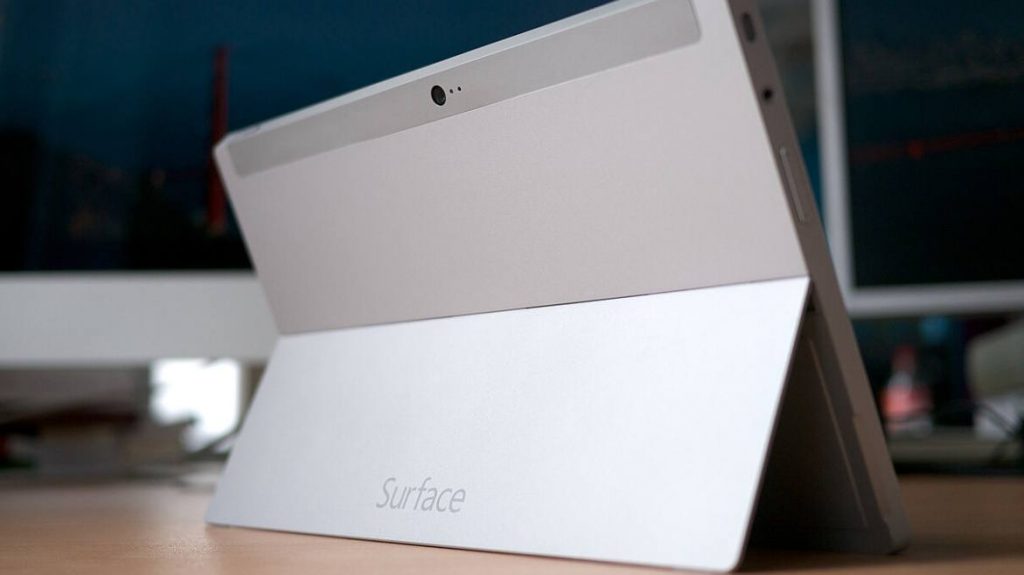Released in October 2013, the Microsoft Surface 2 was an evolution of the original Surface RT, offering improved performance, a higher-resolution display, and a more refined design. Running Windows RT 8.1, this device was Microsoft’s attempt to refine its vision for an ARM-based tablet-laptop hybrid. Though it was ultimately limited by its software ecosystem, the Surface 2 brought meaningful improvements over its predecessor and remains an interesting chapter in the Surface lineup’s history.
Design and Build Quality
The Surface 2 featured a sleek magnesium chassis with a silver finish, making it both lightweight and durable. Compared to the original Surface RT, which had a black VaporMg casing, the Surface 2 felt more premium and modern. The built-in kickstand was improved, offering two positions (instead of just one), making it more comfortable to use on different surfaces.

Display Upgrade
One of the most significant upgrades was the Full HD 1080p display (1920×1080 resolution). This was a major step up from the Surface RT’s 1366×768 resolution, providing sharper text, more vibrant colors, and a better overall viewing experience for videos, web browsing, and productivity tasks.
Performance and Hardware
Powered by the NVIDIA Tegra 4 processor and 2GB of RAM, the Surface 2 was noticeably faster than the Surface RT, which ran on an older NVIDIA Tegra 3 chip. The new processor brought smoother performance, better multitasking, and improved energy efficiency, making the device feel more responsive.
Storage options remained at 32GB and 64GB, with a microSD card slot for expandable storage, allowing users to add more space as needed.
Battery Life
Microsoft claimed up to 10 hours of battery life on the Surface 2, which was an improvement over the original Surface RT. Thanks to the more efficient Tegra 4 processor, users could expect a full day of moderate usage, making it a solid companion for travel or work.
Software: Windows RT 8.1 Limitations
Despite the hardware improvements, the biggest drawback of the Surface 2 was still its operating system—Windows RT 8.1. Unlike full Windows versions, Windows RT could only run apps from the Microsoft Store, meaning traditional desktop applications like Photoshop, Steam, and legacy Windows software were not supported. This limitation ultimately hurt the adoption of Windows RT devices.
However, Windows RT 8.1 did bring several refinements, such as better multitasking, improved Start screen customization, and the inclusion of Microsoft Office 2013 RT (Word, Excel, PowerPoint, and OneNote), making it a capable productivity tool out of the box.
Connectivity and Ports
Surface 2 retained some of the best aspects of the original Surface RT while making small but meaningful upgrades:
- Full-size USB 3.0 port (upgraded from USB 2.0 on Surface RT) for faster file transfers.
- Micro HDMI port for connecting to external displays.
- MicroSDXC slot for expanding storage.
- 2×2 MIMO Wi-Fi for better wireless performance.
A significant addition was the LTE model, which was released later in 2014, allowing users to stay connected without relying on Wi-Fi.
Cameras and Multimedia
Microsoft upgraded the cameras on the Surface 2, giving it a 3.5MP front-facing camera and a 5MP rear camera, both capable of recording 1080p video. This was a step up from the 1.2MP cameras found on the original Surface RT, making video calls and casual photography more practical.
The device also featured stereo speakers with improved audio quality, making media consumption a better experience compared to its predecessor.
| Feature | Surface RT (2012) | Surface 2 (2013) |
|---|---|---|
| Processor | NVIDIA Tegra 3 | NVIDIA Tegra 4 |
| RAM | 2GB | 2GB |
| Display | 1366×768 | 1920×1080 (Full HD) |
| USB Port | USB 2.0 | USB 3.0 |
| OS | Windows RT | Windows RT 8.1 |
| Kickstand | Single-position | Dual-position |
| Cameras | 1.2MP (both) | 3.5MP (front), 5MP (rear) |
| Battery Life | ~8 hours | ~10 hours |
| Color | Black | Silver |
Legacy and Impact
While the Surface 2 was a much better device than the original Surface RT, it still suffered from the same core issue: Windows RT’s limited app ecosystem. Users were frustrated by the inability to install traditional Windows programs, and developers were hesitant to fully support the Windows Store.
Microsoft eventually abandoned Windows RT, transitioning to full Windows 10 on later Surface devices. However, the Surface 2 remains a fascinating product, marking an early attempt at an ARM-based Windows experience. Some enthusiasts still tinker with these devices, attempting to repurpose them for different use cases.
Conclusion
The Microsoft Surface 2 was an admirable upgrade over the original Surface RT, featuring a better display, improved performance, longer battery life, and a more refined design. Unfortunately, its potential was limited by Windows RT 8.1’s restrictions, preventing it from being a true laptop replacement. While the Surface 2 wasn’t a commercial success, it played a role in Microsoft’s journey toward creating the powerful, versatile Surface devices we know today.